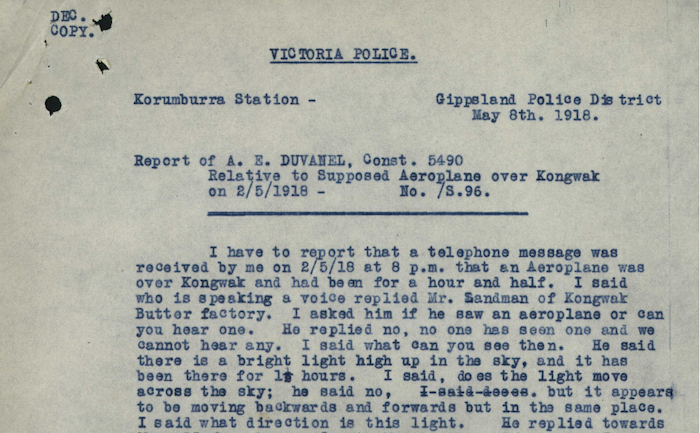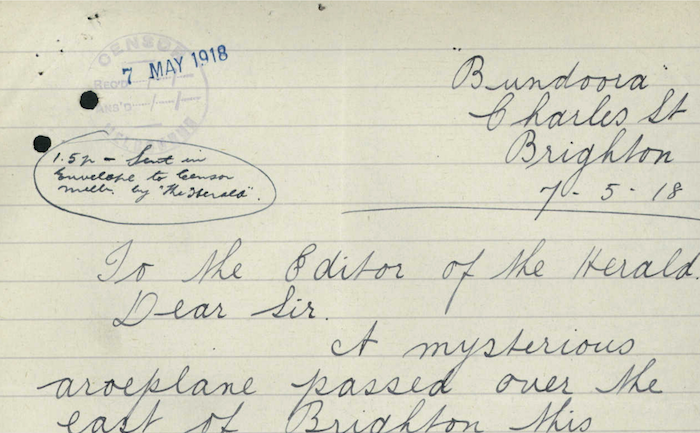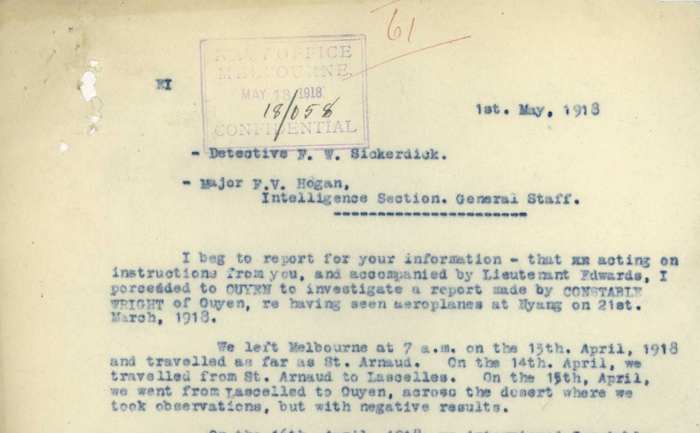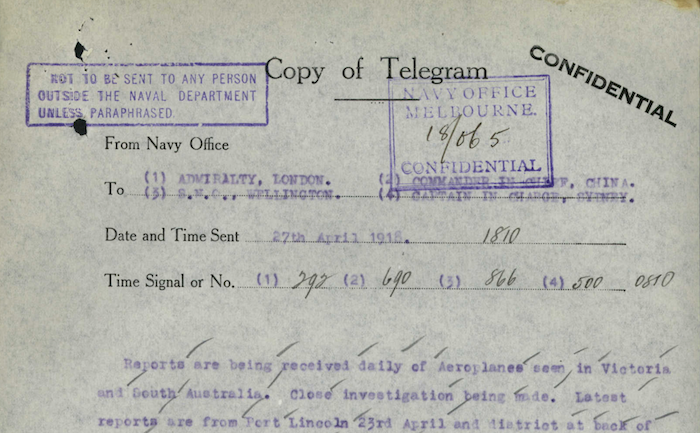Wednesday, 8 May 1918
NAA: MP1049/1, 1918/066, page 35 is a copy of a report from Constable A. E. Duvanel of Korumburra Station, Victoria Police. Duvanel gives a blow-by-blow account of his conversation at 8pm on 2 May 1918 with Mr Sandman of the Kongwak butter factory about ‘a bright light high up in the sky’, which had been […]










